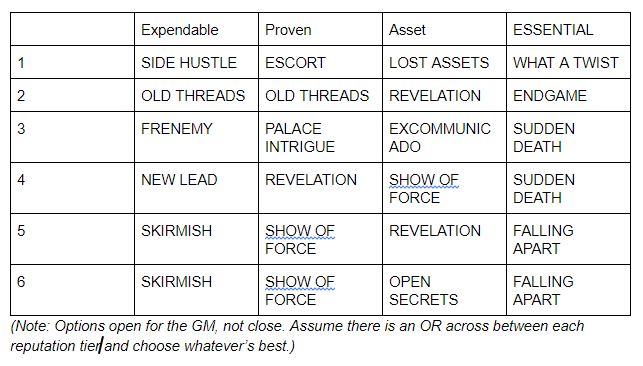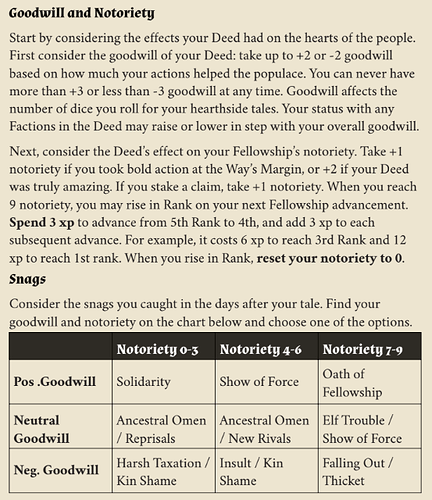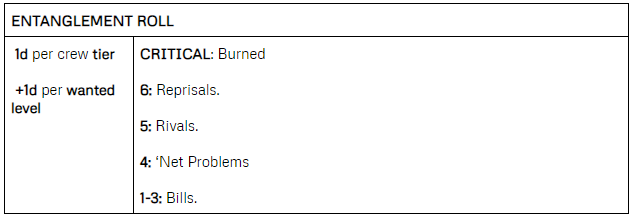What have you done to mess around with Entanglements?
I’ve been messing around with them in tandem with the greater Faction Module(s) in my game. They seem like one of the most powerful tools for keeping the conversation and play going, but I really don’t know as I’ve only had a couple of fragmented one-off, two-off, three-off, etc. sessions.
How well do they work in your experience?
What do you think makes a good entanglement rule?
I’m wondering what exactly you can get away with and still have a powerful prompt strong enough to thrust narrative and play forward simultaneously. Here’s my attempt at writing a couple for the SOVEREIGN CHARTER, which is a faction playstyle wherein the goal is to rise up the ranks of an organization (trying to write the rules setting agnostic, but think airships):

COMPLICATIONS
SKIRMISH - An enemy of your organization is making a move and your superiors want your crew to take care of it. Stop them first or tick some clocks as a consequence.
OLD THREADS - An old rival or ally asks a favor. It could be a trap.
PALACE INTRIGUE - A power struggle in the organization has allowed for an opportunity. Two of your allies ask for help but you can only choose one.
FRENEMY - A rival within your organization asks you for aide.
REVELATION - New information on an old thread rears it head. Address it or let it go.
SHOW OF FORCE - Your organization has decided it is time to strike at one of their enemies. Answer the call or face the consequences .
NEW LEAD - A new lead from an acquaintance presents itself. It may be beneficial to your organization. Or it could be a trap.
LOST ASSETS - Precious assets have fallen into the wrong hands. Get them back or deal with the fallout.
EXCOMMUNICADO- Someone in the organization has gone rogue. Hunt them down or find out why.
OPEN SECRETS - Someone with sensitive information is threatening to go public. Find some way to shut them up.
SIDE-HUSTLE- Everyone has side hustles, even this outfit. One of them is about to bear fruit.
WHAT A TWIST - An ally or rival defects from their side.
SUDDEN DEATH - one of the leaders of the organization has died. There is much to discuss regarding succession.
ENDGAME - Two enemies make an uneasy alliance. Deal with it or be a part of it.
FALLING APART - Your rivals or enemies succeed at a major move. Deal with the fallout or show your cards.
No sure how to balance the table or if it’ll work, but I want to give players a sort of natural progression point for their campaigns that hopefully along with a simple faction sheet tracker will be powerful enough to help shape campaign structure without being too limiting or derivative. Would love your thoughts on if it’ll work or not!


